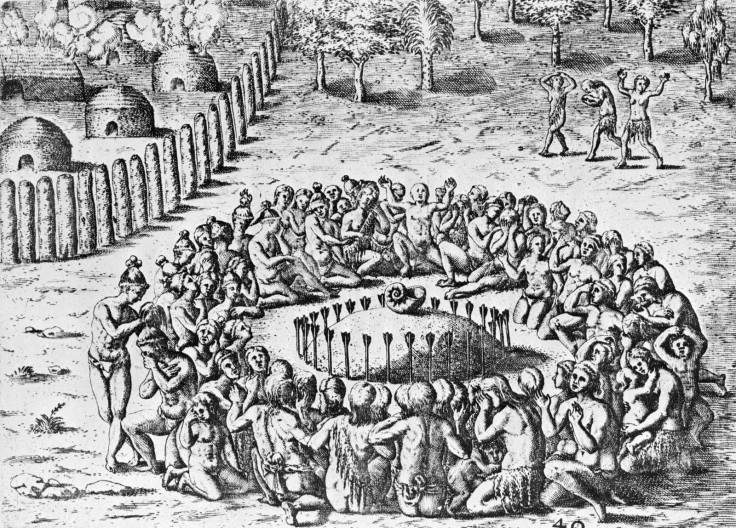7,000-year-old Native American burial site found deep underwater in an 'unprecedented' discovery
Archaeologists found skulls, jawbone and more at the ancient burial site, which was buried 21 feet underwater on the seafloor.
Underwater archaeologists have just found an ancient Native American burial site, dating back to the Early Archaic period. The 7,000-year-old site was found submerged under 21 feet of water, on the seafloor, off the coast of Florida, near the Venice shoreline.
The submerged resting place was first discovered by amateur divers in 2016, around 900 feet off the coast of Florida. Underwater archaeologists from the Bureau of Archaeological Research (BAR) used non-invasive investigative techniques to survey the area and discovered ancient wooden stakes, which were dated back to over 7,200 years old.
"Seeing a 7,000-year-old site that is so well preserved in the Gulf of Mexico is awe inspiring. We are truly humbled by this experience," Duggins said in a statement. "It is important to remember that this is a burial site and must be treated with the utmost respect."
Scientists believed that around 7,000 years ago, the sea levels in the area were far lower than they are today. It appears that a freshwater pond existed in the area, where ancient Native Americans buried their dead. The burial site was later buried underwater, as sea levels rose. However, the site appears to have remained intact, despite the flooding.
Researchers also found bone fragments belonging to prehistoric humans. A single molar, still attached to the jawbone was discovered. "That's something we don't see in modern populations, so that was a quick indicator we were dealing with a prehistoric individual," BAR's underwater archaeology supervisor Ryan Duggins said, National Geographic reported.
The remains of a broken arm, three skulls and carved wooden stakes were also discovered at the submerged site. So far, researchers have recovered the remains of around six individuals from this prehistoric hunter-gatherer society. However, archaeologists expect to find more remains and artefacts from the site in the future.
The discovery was heralded as "unprecedented" by the Florida state department. Fortunately, the site is protected under state law, which will likely help efforts to recover more remains and artefacts.
"As important as the site is archaeologically, it is crucial that the site and the people buried there are treated with the utmost sensitivity and respect. The people buried at the site are the ancestors of America's living indigenous people. Sites like this have cultural and religious significance in the present day," said Dr Timothy Parsons, the director of Florida's Division of Historical Resources (DHR) and the State Historic Preservation Officer.
"We now know that this type of site exists on the continental shelf," Duggins added. "This will forever change the way we approach offshore archaeology."























